Looking at Minerals
Crystal Shapes, Other Properties of Minerals
Rocks form as their minerals grow. Each mineral begins to build its solid shape at a certain temperature. Most minerals need liquid in order to grow. Different minerals grow at different rates.
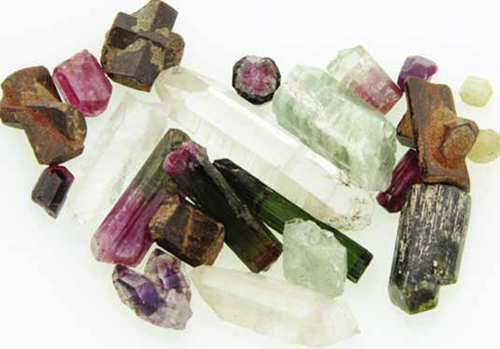 Various gases, liquids, and other minerals can affect the way a mineral grows.
Various gases, liquids, and other minerals can affect the way a mineral grows.
As they grow, minerals take various forms. Many minerals form crystals. But others form into grains, fibers, or nuggets—even irregular chunks. Still, others grow into several different forms. Each of those forms developed under different conditions.
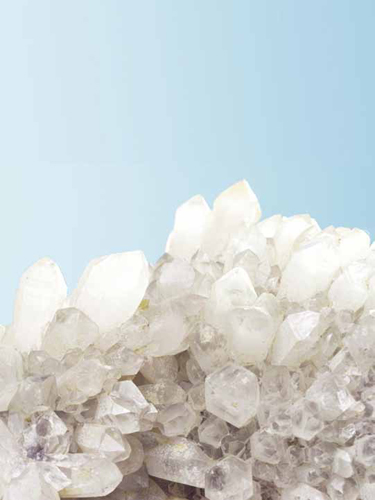 A mineral's habit is its most common form.
A mineral's habit is its most common form.
Crystal Shapes
For a mineral to form a crystal, it needs room to grow. With enough space, crystals grow in groups to produce larger crystalline structures. But not all crystals have the same pattern of flat surfaces. Some crystals have the shape of cubes. Others look like flat boxes or rectangles on end. Still, others have the shape of six-sided boxes. Minerals occur in a variety of crystal shapes.
EXAMPLES OF CRYSTAL SHAPES
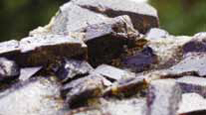 MONOCLINIC
MONOCLINIC
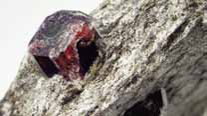 CUBIC
CUBIC
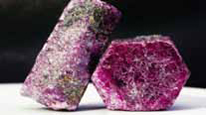 HEXAGONAL
HEXAGONAL
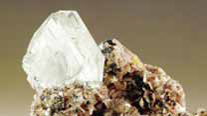 ORTHORHOMBIC
ORTHORHOMBIC
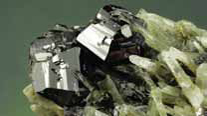 TETRAGONAL
TETRAGONAL
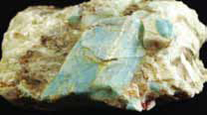 TRICLINIC
TRICLINIC
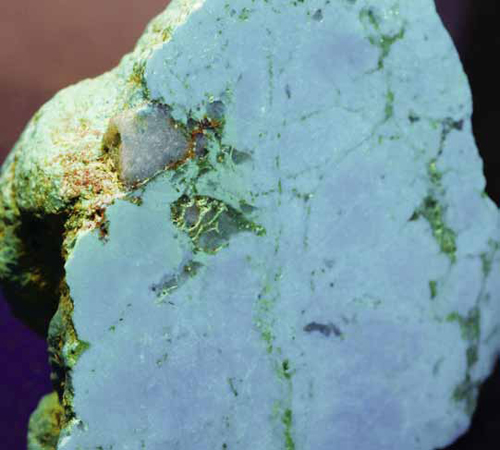 Turquoise
Turquoise
perhaps the most beautiful crystals of all are gemstones. They form only under certain conditions. The common mineral corundum, for instance, has no color. But trace amounts of different elements may occasionally tint the corundum. Rubies and sapphires are both colorful forms of corundum.
Other Properties of Minerals
Minerals vary in other ways, too, including how they split apart. Some minerals break into irregular chunks. Other minerals tend to split into thin sheets. Still, others split into cube shapes. These various shapes relate directly to the arrangement of atoms in the mineral.
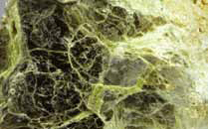 Like many other minerals, mica splits into flat surfaces called cleavages.
Like many other minerals, mica splits into flat surfaces called cleavages.
Outside color is another property that identifies many minerals. But it doesn't work every time. Sometimes a mineral occurs in several different colors. When that happens, the best way to identify the mineral is to look at its streak. A streak is the powder left behind when the mineral rubs across a dull-white surface. A mineral's streak will always have the same color, even if its outside colors are different.
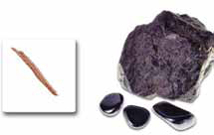 Hematite often looks black, but the streak it produces is always reddish brown.
Hematite often looks black, but the streak it produces is always reddish brown.
Every mineral also has a certain shine, or luster. A mineral's chemical make-up determines its luster. Some minerals have a metallic shine because they contain metal elements. Many other minerals are nonmetallic. They may look glassy, silky, pearly, or even dull.
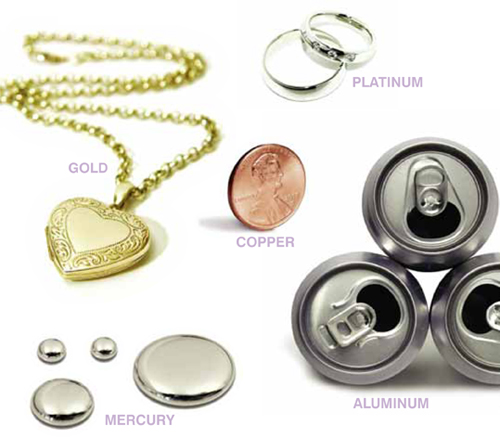 Metal elements include gold, silver, iron, copper, lead, mercury, uranium, zinc, platinum, and aluminum.
Metal elements include gold, silver, iron, copper, lead, mercury, uranium, zinc, platinum, and aluminum.
Minerals differ in their hardness, too. A fingernail can make scratches in some minerals. But even a knife cannot scratch other minerals. Diamonds are so hard that nothing on Earth can scratch them.
Moh's Scale
In 1822, Friedrich Mohs of Germany created a scale to measure the hardness of all minerals. This scale remains in use today.
| 10 |  |
diamond (hardest) | 5 | apatite | |
| 9 |  |
corundum | 4 |  |
fluorite |
| 8 |  |
topaz | 3 | calcite | |
| 7 |  |
quartz | 2 |  |
gypsum |
| 6 |  |
orthoclase | 1 |  |
talc (softest) |
A sample mineral that scratches calcite (#3) but not fluorite (#4) has a hardness of 3.
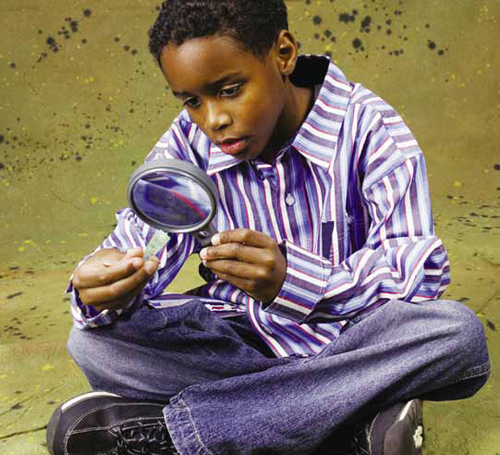
Identifying a mineral requires a close look at its different properties. But some minerals are easier to identify because they have a unique quality. Halite, for instance, tastes salty. The soft mineral talc feels greasy. Kaolin, another mineral, smells like freshly plowed soil.
Additional topics
- Soil Formation - Life in the Soil, Soils Form Differently, Layers of Soil
- Three Types of Rock - Rock Formed by Cooling and Hardening, Rock Formed From Particles, Rock Formed By Heat and Pressure
- Other Free Encyclopedias